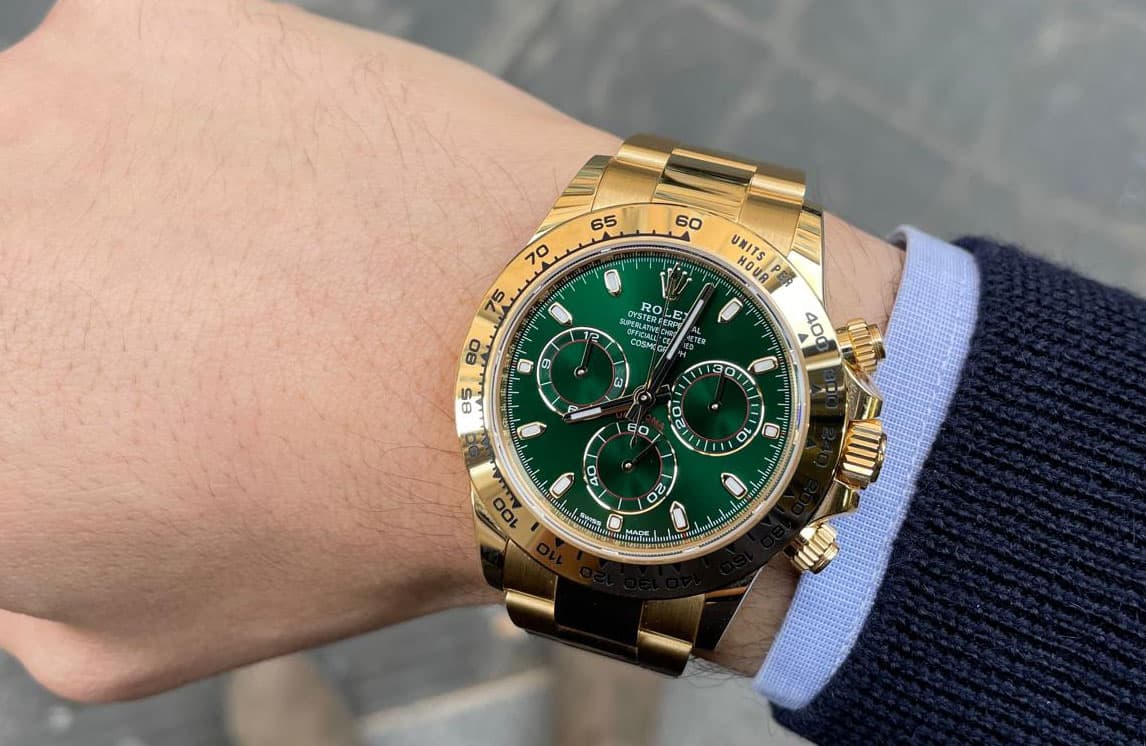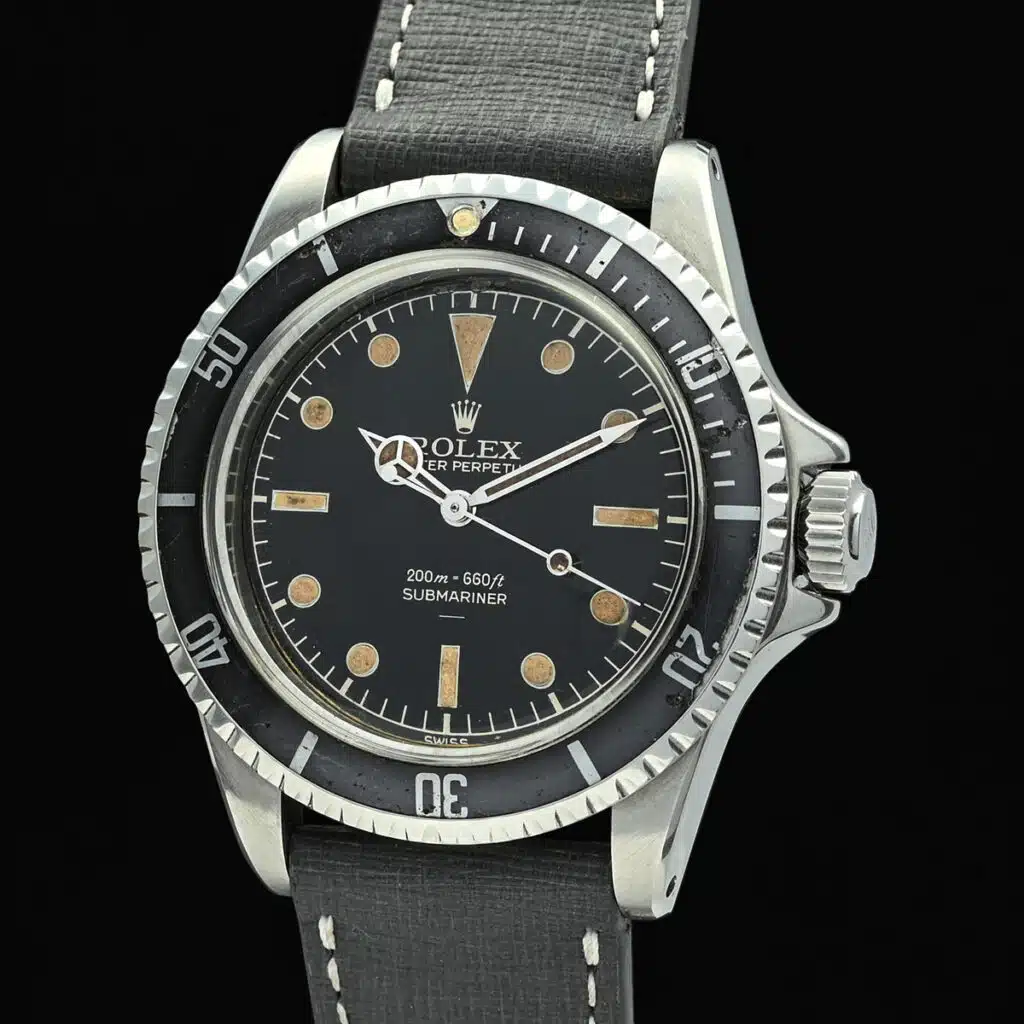
Rolex introduced the Submariner reference 5512 in 1959 and its production continued until around 1980. The 5512 was the first in this collection to feature crown guards. The specimen visible in the photo has the coveted "pointed" shoulders and the "underline" dial, considered by most to be a reference to the change of the mixture of luminous material of the indexes and hands from radium to tritium. Thecombination of "underline" and "horn" dial is rare and highly sought after.
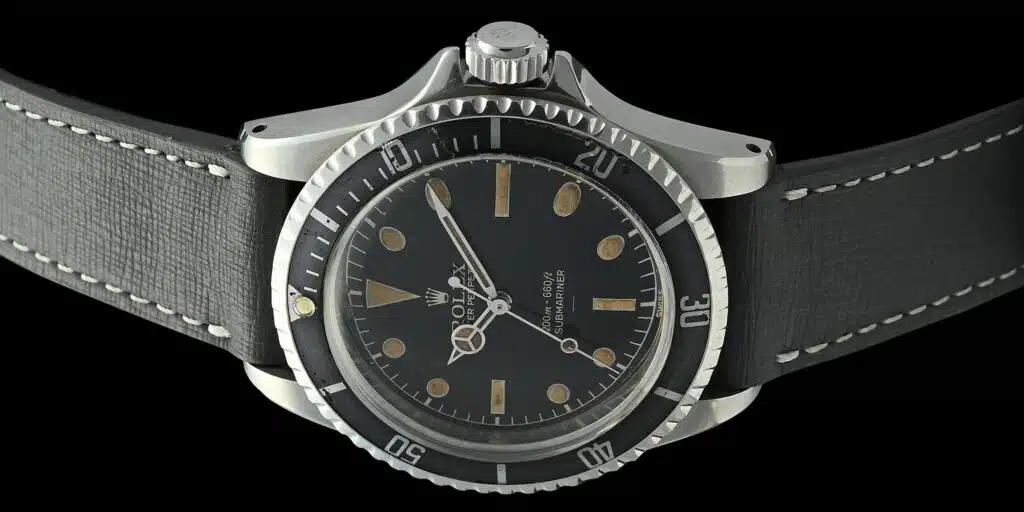
The debut of the Submariner in 1953 marked a milestone for the company, representing their first mass-produced professional wristwatch for divers. Early models of the Submariner were equipped with an Oyster case without crown guards, but in 1959 Rolex introduced the ref. 5512, the first to be equipped with these guards.
Considered a significant innovation, destined to become a constant feature in later Submariner models, the crown guards were designed to offer greater safety to the crown during diving. The first examples of the ref. 5512 featured square crown guards, and it is estimated that around 100 were produced. However, subsequent tests showed that the square shape made it difficult to adjust the crown with diving gloves.
To solve the problem, Rolex modified the pieces with square guards to a more tapered style, known as the "horn" crown guard. It is believed that, of the 100 specimens initially produced, only a small part was kept with square guards, making them particularly rare. The first examples featured "glossy" black lacquered dials, with several variations and minor adjustments in detail before the switch to "matte" dials around 1966. With a design very similar to its counterpart ref. 5513, the ref. 5512 is significantly rarer since it mounts a chronometer-certified caliber 1530, making it highly sought after by collectors today.
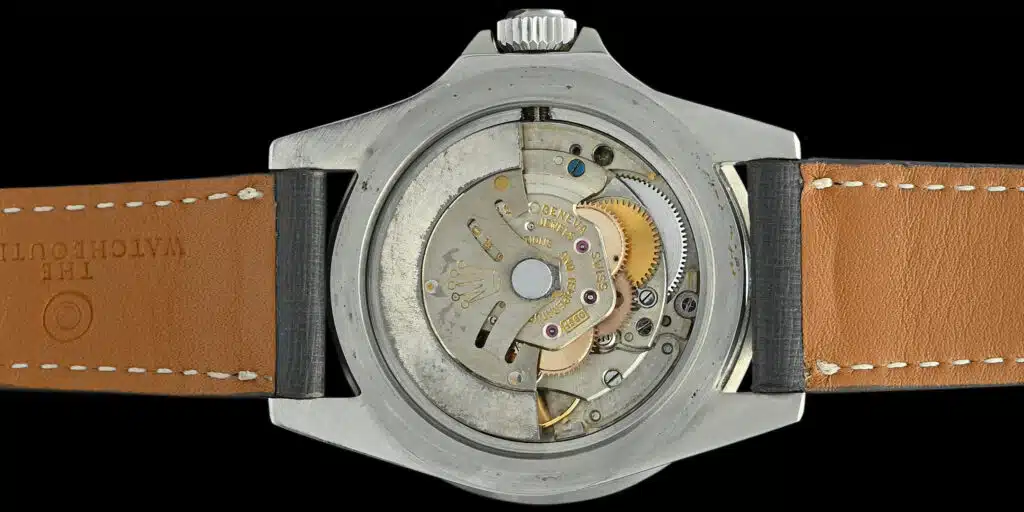
Rolex Submariner 5512 "Underline"
The Rolex Submariner reference 5512, with its particular "Underline" variant, is a piece of watchmaking history shrouded in mystery and elegance, a real treasure trove for enthusiasts and collectors. This story begins in the 60s, a period of great ferment for the wristwatch industry, where technological innovation was perfectly combined with an increasingly refined and distinctive design.
The Submariner 5512 was introduced to the market in 1959, but it was not until the first half of the 1960s that the "Underline" variant appeared, so named because of the thin line on the dial, generally at the bottom under the Submariner inscription or under the "Superlative Chronometer Officially Certified" logo. This seemingly small detail actually concealed a much deeper meaning, linked to regulations on radioactive materials and the company's move towards the use of less harmful luminescent materials.
The story goes that Rolex, mindful of the health of its customers and in response to growing concerns regarding the use of radioactive substances such as radium in dials, began experimenting with tritium, which is less harmful. The Underline was a discreet but clear signal that indicated this transition, thus marking an era of responsibility and innovation.
Production of the Underline was limited and lasted a very short time, making these variants extremely rare and sought after. Each Submariner 5512 Underline has its own story, shrouded in the mysteries of time. It is said that specimens have crossed the oceans, belonged to professional divers, explorers and adventurers, becoming not only reliable instruments underwater, but also witnesses of daring feats and timeless discoveries.
Over the years, the appeal of the Underline has only grown. Enthusiasts and collectors from all over the world have dedicated themselves to the search for these rare specimens, often paying astronomical sums of money for them. Each watch has its own peculiarities, from the slight signs of wear that tell of a life lived intensely, to the unique nuances of the dial, which transforms over the years, acquiring a distinctive character.
The story of the Submariner 5512 Underline is a journey through innovation, beauty and adventure. It is a testament to the genius and care that Rolex has always devoted to its masterpieces, a symbol of the company's relentless pursuit of perfection. This watch is not just a collector's item, but a piece of history, a link with an era of great changes and discoveries, which continues to live on the wrist of those who know how to appreciate its priceless beauty and deep meaning.
5512 Underline at auction
2023 Sothebys GE, year 1963, sold for €891,975 – four inscriptions, underline under Certified
2019 Christies HK, year 1963, case 870,024, sold for 74,500 euros four inscriptions, underline under Oyster Perpetual
2017 Christies online, year 1963, sold for €14,200 four inscriptions, underline under Oyster Perpetual
2016 Christies online, year 1962, sold for $22,500 four inscriptions, underline under Certified
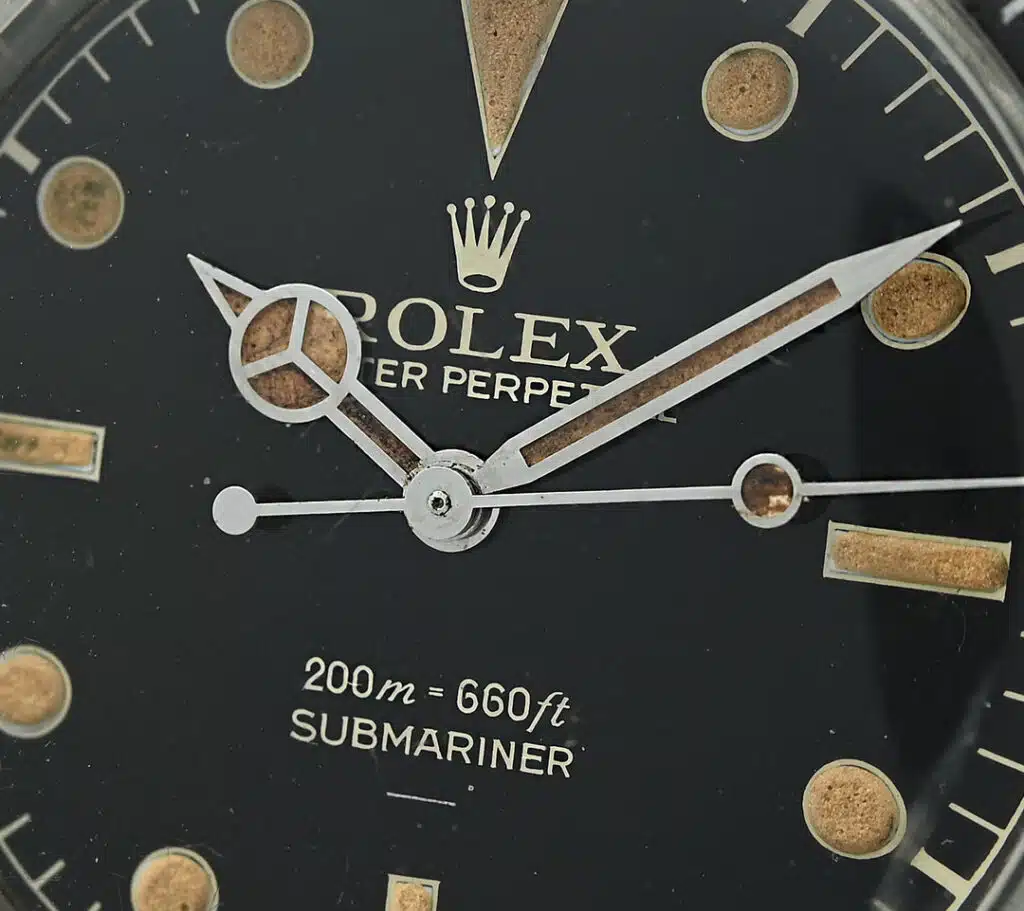
Comparison of radium and tritium dials Watches have a long history of using luminescent materials to improve legibility in low-light conditions. Two of the most well-known materials used in the past are radium and tritium. Both emit light through a process called X-ray luminescence, but they have significantly different properties and health risks.
Radium in Clocks Radium, discovered by the Curie couple at the end of the 19th century, was one of the first luminescent materials used in watches. Its popularity grew rapidly due to its powerful brightness, which made watch faces easily readable even in the dark. However, radium is extremely radioactive and can be dangerous if not handled properly. Its radioactivity can cause DNA damage, which in turn can lead to various types of cancer and other serious diseases. Because of these dangers, the use of radium in commercial applications, including watches, has been largely abandoned since the 1960s. The stories of the "Radium Girls," workers who painted watch faces with radium paint and suffered serious health consequences, highlighted the risks associated with radium exposure.
Tritium in Watches Tritium, an isotope of hydrogen, has become popular as a substitute for radium in watches since the 1960s. Unlike radium, tritium emits low-energy beta-type radiation, which is unable to penetrate human skin, making it much safer to handle. The brightness of tritium comes from its ability to excite phosphors within the luminescent paint, producing visible light. Although tritium is significantly safer than radium, it still has a limited average lifespan of about 12.32 years, which means that the brightness of watches using it will gradually decrease over time. Additionally, there are still some safety concerns, particularly if the watch face breaks, which could potentially release tritium into the environment.
Comparison and Conclusions The main difference between watch dials that use radium and those with tritium is the level of safety: tritium is much safer than radium due to its lower radioactivity and the type of radiation emitted. However, both materials have drawbacks, including decreasing brightness over time and potential health risks if not handled properly. In recent years, the watch industry has continued to evolve, with the introduction of new non-radioactive luminescent materials, such as Super-LumiNova, which offer luminosity without the risks associated with radioactivity. These developments have made watches safer and more durable, while at the same time maintaining the high legibility that users demand.
Sources:
– Curie, M. & Curie, P. (1898). "La radioactivité", Comptes rendus de l'Académie des Sciences.
– National Institute for Occupational Safety and Health (NIOSH). "Radium Girls: The Dark Story of America's Shining Women".
– United States Nuclear Regulatory Commission (NRC). "Tritium, Radiation Protection".
